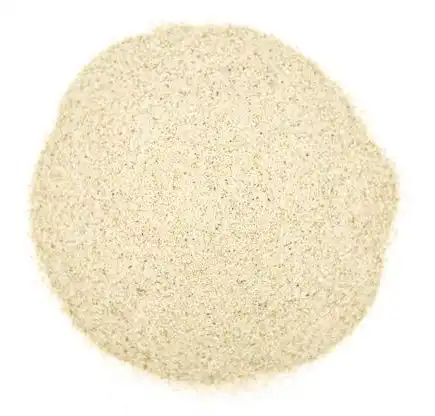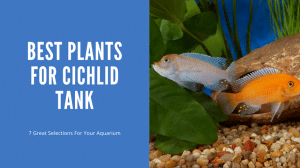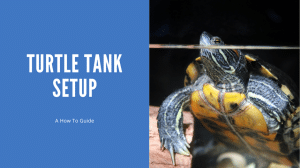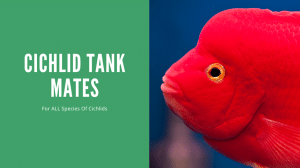Thank you for visiting! By the way… any links on this page that lead to products on Amazon and other stores/partners are affiliate links Aquarium Store Depot earns a commission if you make a purchase.
If you’re looking for excellent fish for your small home aquariums, look no further.
The Pygmy cory is excellent freshwater fish that is easy to keep, breed, and care for. Native to the Madeira river in Brazil, these fish are a miniature version of the Corydoras species that have their distinctive characteristics. The aquarium community loves Pygmy cory because of its hardy nature and striking appearance.
In this article, I will discuss everything in detail about the Pygmy Cories and how to breed them properly.
Let’s go fishing!
Key Takeaways
- Pymymy Cory Catfish are peaceful bottom dwells who enjoy schooling
- They only grow to 1.5 inches and leave for about 3 years
- They are best in aquariums 10 gallons and larger
A Brief Overview
| Scientific Name | Corydoras pygmaeus |
| Common Names | Pygmy Corydoras, Pygmy Catfish, Pygmy Fish |
| Family | Callichthyidae |
| Origin | Tropical inland waters in South America, and is found in the Madeira River basin in Brazil |
| Diet | Omnivore |
| Care Level | Moderate |
| Activity | Active |
| Lifespan | 3 years |
| Temperament | Peaceful |
| Tank Level | Bottom Dweller |
| Minimum Tank Size | 10 Gallons |
| Temperature Range | 72°F to 79°F (22 to 26°C) |
| Water Hardness | 6 to 15 dKH, but preferably below 8 |
| pH Range | 6.5 to 7.5 |
| Filtration/Water Flow | Moderate |
| Water Type | Freshwater |
| Breeding | Egg layer |
| Difficulty to Breed | Difficult |
| Compatibility | Community tanks |
| OK, for Planted Tanks? | Yes |
What are they?
Pygmy catfish are one of the smallest fish in the corydoras pygmaeus family, Callichthyidae. Their native habitat is the Rio Madeira river in Brazil. The captive-bred specimens are hardier and tougher than the wild ones.
Pygmy cory catfish is a tiny fish species with a pale tan or olive color on their bodies. The black stripe also runs the length of the body through the nose to the tail fin. They are different from other species of corydoras because they reside in the middle as well as the bottom of the tank. The tiny size makes them ideal for planted nano aquariums.
Origin and Habitat
The native habitat of this species is South America, particularly commonly found in the Madeira river basin in Brazil, the Nanay river, and the Aguarico river.
Initially, they were considered a miniature Corydoras species of Corydoras Hastatus.
However, in the early 1990s, researchers found their distinct characteristics, and hence the Pygmy cory catfish species was introduced.
Appearance
Pygmy cory or Corydoras pygmaeus, as the name suggests are tiny fish species endemic to Brazil. The female Pygmy cory is an inch longer than the males reaching around 0.75 inches in length. Female Corydoras pygmaeus are found broader than males too, particularly when they are carrying eggs.
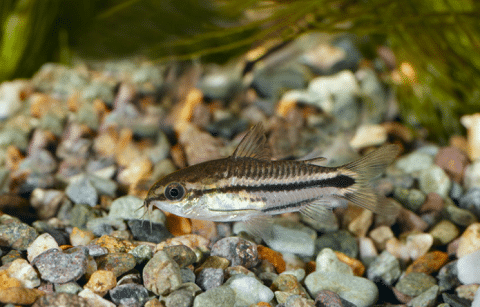
The Pygmy Cory has distinctive characteristics that set them apart from its counterparts. They have a beautiful teardrop-shaped body and a large head.
Also, the body is silver in color and a black line runs horizontally through the snout and tail fin. There’s also a second black line which is thinner and runs lower down along the body. The mouths of Pygmy cory species are under-turned with barbels that act as a sensor and help them find food at the bottom of the tank.
Lifespan
The lifespan of Pygmy cory is relatively shorter than other fish species. They live for around only three years on average. However, life expectancy largely depends on other factors such as tank conditions, food and nutrition, and proper filtration of the ecosystem.
Average Size
They are tiny fish with an average size of no longer than one inch in length. In some rare cases, they may grow for up to 1.5 inches in length.
Quick Tip: On average, the female Pygmy cory is one inch longer than the male fish which is closer to 0.75 inches in length.
Care
Pygmy corys are a popular freshwater fish among many fish keepers due to their small size and fairly hardy nature. They are also fun to watch with an active nature which appeals to most fish keepers.
Also, the expert aquarists believe there is not much to take care of, they have unique water requirements that make these fish somewhat demanding. Also, they have a narrow comfort zone which requires a great amount of attention for proper survival.
They are also prone to common fish diseases due to unclean environments. Thus, I recommend changing the water after every two weeks and cleaning algae before it overpopulates. The diet of your Pygmy cory should also be taken into consideration for keeping pygmy corys happy and healthy.
Aquarium Setup
Like many species, they do the best in an aquarium setup that mimics their natural habitat. The Pygmy cory’s tank should be well-decorated with aquatic plants and other tank decorations that provide hiding places and points of stimulation.
Since they are bottom dwellers, they spend a lot of time searching for food at the bottom of the tank. Thus, choose a substrate that won’t harm their barbels.
I also recommend adding grasses and shrimp flats because Pygmy cory loves it.
Tank Size
Pygmy Cory is tiny freshwater fish excellent for small aquariums. Therefore, a 10-gallon tank is ideal for a group of 4 or 8 Pygmy cories. However, if you want to keep in them a larger shoaling group, I would recommend increasing the tank size.
Each additional Pygmy cory needs an additional 2 gallons of tank capacity to remain comfortable in its habitat.
Water Parameters
As mentioned earlier, mimicking the natural environment of Pygmy cory is essential to keep them happy and thriving.
They come from the rivers and tributaries of South America where the water is fairly warm, cloudy, and full of life. The water flow is moderate so they have resistance. Also, the natural environment of Pygmy cory is rich in tannins that provide slightly acidic water as well. You can replicate tannins by using Indian Almond Leaves.
The ideal water parameters are:
Water Temperature: 72°F to 79°F (22 to 26°C)
pH range: 6.5 to 7.5
Water Hardness: 6 to 15 dKH, but preferably below 8.
Filtration and Aeration
Pygmy cory is vulnerable to high levels of Ammonia, nitrites, and nitrates. Therefore, you should always aim to cycle and fully establish your tank before introducing them to the tank.
Also, I highly recommend changing 10% to 25% of the water twice or at least once a month because they are also very sensitive to frequent water changes.
I also advise monitoring the bacteria levels in the substrate. These fish species get plagued by bacteria infections. Thus, proper preventive measures should be taken to avoid risking the life of your fish.
Routine water tests should also be performed with an efficient water test kit, clean up all the leftover food before it rots, and remove all the dead plant and fish matter from the aquarium. Also, vacuuming the substrate help prevent many diseases. The water should be properly circulated to avoid biofilm from accumulating on the water column.
I highly recommend installing a sponge filter or power filter for the Pygmy corydoras species. That’s because these fish are tiny and you need to ensure the output of the filter is slow and the inlet tubes are not too big. For more elaborate planted tank setups, a canister filter is ideal.
Lighting
Pygmy corys prefer dim lighting. Thus, you can install dimmable or adjustable LED lights in your tank. You can also provide them with a heavily planted setup with driftwood pieces and roots, and floating plants, to provide shade from the harsh lights.
Aquatic Plants and Decorations
The natural environment of Pygmy cory is densely populated with plants. Therefore, they are safe for a planted aquarium.
Plants like mosses and large-leaved plants greatly benefit them as hiding spots from the bigger, aggressive fish. Also, floating plants like duckweed to diffuse the bright lighting works the best for the Pygmy cory tank.
For decorations, you can go for Manzanita Driftwood, aquarium rocks, and other decorations.
Editor's Choice
Manzanita offers it all. Great shape, low tannins, quick to water log and reasonably priced. It's the ultimate driftwood!
Tank Maintenance
The Pygmy cory is susceptible to a common fish disease known as Red Blotch disease. The cause of this disease is stress that might be induced as a result of fluctuating water conditions and poor water quality. The red blotch disease along with other types of diseases can spread through the addition of new decors, plants, or even new fish to the tank.
Thus, it is important to carefully clean the types of equipment before adding them to your tank. Also, the new fish should be quarantined before introducing to the tank.
To keep things simpler and safer, it is recommended to check the water conditions and parameters regularly. Also, do weekly water changes to avoid additional stressors that can cause the outbreak of diseases.
Substrate
Since Pygmy cory is a bottom-dwelling fish, it will root around in substrate looking for food. Thus, I recommend adding fine sand or fine-grained substrate without any sharp edges. That’s because the sharp substrate might harm the barbels of your fish in the process.
Natural sand is excellent for bottom feeder fish to forage around in.
However, I recommend fine sand for the Pygmy cory than the small, round gravel.
Community Tank Mates
However a peaceful fish, Pygmy cory is not suitable for a community tank. That’s because they are easily stressed or intimidated by larger, aggressive tank mates. Their mouths are structured in a way that they cannot even nip other fish or fight back when bullied.
Suitable Tank Mates for them
The Pygmy cory catfish enjoys the presence of small-sized fish with the same temperament. Here is a list of suitable tank mates for Pygmy cory:
- Otocinclus Catfish
- Chili Rasboras
- Harlequin Rasboras
- Albino Bristlenose Pleco
- Ember Tetra
- Panda Garra
- Celestial Pearl Danio
- Dwarf Ember Barbs
- Guppies
- Endlers
- Pencilfish
- Royal Farlowella
- Zebra Danios
- Cherry Barbs
Fish to Avoid
- African Cichlids
- Goldfish
- Aggressive South American Cichlids like Oscars
Breeding
According to the masses, breeding Pygmy cory is a bit technical. However, I beg to differ.
I believe breeding this fish is easy but breeding the fry can be a little challenging. They breed regularly provided that they have stable water conditions and a healthy diet and the more fish you add to the tank, the more the chances of breeding. Jay Miller also has a video below that talks about his breeding process.
To get them to breed, aquarists recommend feeding them a high protein diet with a decrease in water temperature by 2 or 3 degrees than their standard range. Also, for breeding conditions, the water has to be slightly acidic.
The female fish of Pygmy cory lays around 100 eggs. Out of them, the female holds a few eggs in a small pouch near the pelvic fin for proper fertilization.
A pair of Pygmy cory form a T-shape where the male releases its milt to fertilize the eggs. After fertilization, the fertilized eggs deposit on a smooth but clean surface such as tank walls or thin-leaved plants.
The eggs hatch in around 3 to 5 days. But before the eggs hatch, it is important to separate the parents as they will most likely eat their own eggs.
After the eggs are hatched, the fish fry eats their yolk sacs and becomes free-swimming fish. At this stage, the fry is so small that it should be fed with commercially prepared fry food or infusoria, crushed flakes, micro worms, etc.
The breeding tank should also be equipped with a sponge filter to avoid sucking the fry.
Some Proven Methods for Breeding Them
It’s best to stimulate the natural process of breeding Pygmy cory to get more success.
- The water temperature should remain cooler around 10ºF the usual temperature to trigger your pair into spawning in the T-position.
- To get soft and acidic water, I recommend using peat filtration.
- Add more airstones to stimulate the stormy flow of your tank water.
- Remove the adult fish or eggs from the tank because the adult fish will most likely eat the eggs.
- I also advise Methylene blue to the tank water to avoid fungus from developing in the tank.
Food and Diet
Pygmy cory is omnivore fish and happily accepts dried foods, frozen foods, and live foods. I suggest adding high-quality protein-based tablets of granules as a daily supplement in their diet to ensure a healthy lifestyle and promote vibrant colors.
In live foods, you can feed them tubifex and bloodworms. However, keep in mind that Pygmy cory is a small fish that needs small food.
You can also feed them:
- Brine shrimp
- Grindal worms
- Frozen Bloodworms
- Mosquito larvae
- Freeze-dried foods such as tubifex and black worms
For plant-based foods, you can feed them algae wafers, sinking foods such as sinking catfish pellets, decaying leaf litter, Indian almond leaves, alder cones, etc.
You can occasionally feed them with blanched zucchini, spinach, peas, cucumber, and other green leafy vegetables.
How often should you feed them?
You can feed your Pygmy cory once a day daily. However, make sure the food is instantly finished within 5 minutes, otherwise, it will contaminate the tank.
Common Health Problems
Though Pygmy cory is a hardy freshwater fish species, it can still carry some diseases and infections. Some of the most common health problems include.
Skin & Gill flukes
Sometimes there is a worm-like parasite that gets attached to your fish. These parasites are so small that are impossible to detect by the naked human eye. The main cause of this disease is overcrowding the tank, high-stress levels in your fish, and poor water quality.
Symptoms of Skin & Gill Flukes
- Itching
- Mucus in skin
- Redness and soreness of skin and gills
Costia
This disease is also caused by a parasite, Ichthyobodo. This parasite thrives in cold water temperatures and it’s very difficult to diagnose the disease in the early stages. The most common treatment for costia is mixing 3 to 4 grams of salt in one liter of water and dipping the affected fish in the salt water.
Symptoms of Costia
- Abnormal patches on the skin
- Clamped fins
- Loss of appetite
- Loss of weight
- Itching
Bacterial infection
Bacterial infections are caused by the bacteria in the tank. One such example of bacterial infection is the Red Blotch Disease.
The disease can be treated with antibiotics.
Symptoms of Bacterial Infections
- Bloating
- Red ulcers
- Red streaks on the skin
Differences between Male and Female
It’s difficult to differentiate between a male and female Pygmy cory because of their small size. However, females are slightly larger in size than males, especially if seen from above.
Where To Buy
Thes fish are readily available at most local pet stores and fish stores. However, if you want to order from a high quality online vendor. I would suggest Flip Aquatics. They quarantine all their livestock for 30 days. You can purchase them from the link below using the promo code ASDFLIPPROMO.
A smaller variety of Cory Catfish. Grows to less than 1.5 inches in length. A peaceful bottom dwelling fish
FAQs
Are they hard to keep?
No, Pygmy Cory is easy to keep. However, they have such water and tank requirements that may be confusing for novice aquarists.
What are they good for?
Pygmy cory is excellent for small aquarium tanks that find larger, aggressive fish a bit daunting. Therefore, if you’re opting for a community tank, you should rethink your decision with Pygmy cory catfish.
Do they need sand?
Yes, since Pygmy cories are bottom and mid-tank dwellers, they are usually seen foraging the substrate. Therefore, fine sand is highly recommended to add as a substrate. Also, Pygmy cory has barbels that might be severely injured if sharp objects are used on the substrate.
What do they eat?
Pygmy cory catfish are omnivores. They accept both plant and protein matter. Pygmy cory catfish eat:
1. Brine shrimp
2. Grindal worms
3. Frozen Bloodworms
4. Mosquito larvae
5. Freeze-dried foods such as tubifex and black worms
What size tank do Pygmy corydoras need?
They are small species of fish that need a small tank to thrive. Thus, a 10-gallon tank would be enough to keep a group of 4 or 8 Pygmy cories.
How much are they?
Pygmy cory is a very reasonable small fish that costs around $2 per fish at reputable fish stores.
How fast do they grow?
Pygmy corys take around 3 to 6 months to grow fully and start spawning themselves.
How many of these should be kept together?
The Pygmy cory is a shoaling species that needs at least a group of eight fish to remain happy and healthy. If you keep just one Pygmy cory, it will most likely fall a victim to stress.
Final Thoughts
Pygmy fish are beautiful, tiny, freshwater fish that looks beautiful in your small aquariums. They are very peaceful fish that appreciates a shoaling group of eight or more fish in their aquarium. Have you owned a pymgy cory catfish before? Let us know your experiences in the comments below!
- About the Author
- Latest Posts
I’m thrilled that you found Aquarium Store Depot! Here you’ll find information on fish, aquariums, and all things aquatics related. I’m a hobbyist (being doing this since I was 11) and here to help other hobbyists thrive with their aquariums! I adhere to a high quality Editorial Process and Review products with real life field usage and practical analysis.



